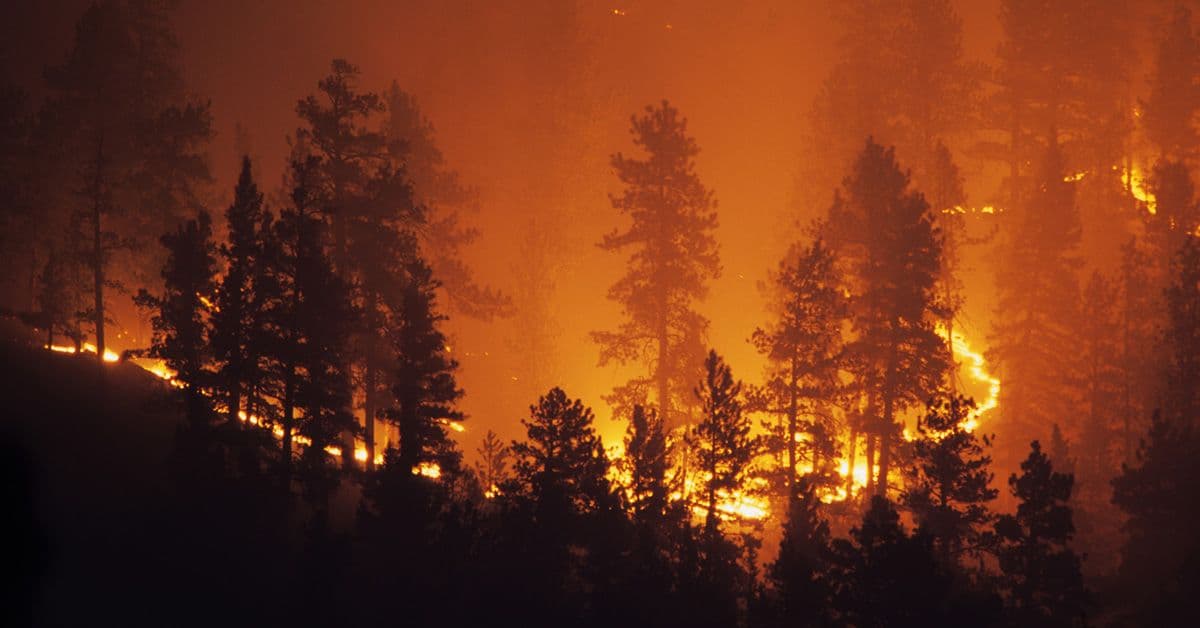Update: This Special Issue is now live, highlighting the latest discoveries on the environmental and health impacts of wildland fires. Click below to explore all articles in this Special Issue.

Update: As of January 2025, this Special Issue is now live. This ongoing rolling collection will continue to update as additional papers complete the peer review process, and we encourage you to periodically revisit the Special Issue page to read the latest studies.

Understanding the Health and Environmental Impacts of Wildfires
Wildland fires have been significantly increasing in magnitude, intensity, and destruction in the past several decades, becoming a prevalent topic of concern for many environmental scientists around the world. Furthermore, prescribed fire has been increasingly used to reduce the risk of catastrophic wildfires—and combined, the impact of wildland fires on local, regional, and global scales is becoming even more important as emissions from other sources have been reduced through regulations. Therefore, for the last several years, there have been increased research efforts to better understand wildland fire emissions, chemistry, aging, and its impacts on air quality, water, climate, and health.
This joint Virtual Special Issue from Environmental Science & Technology (ES&T), Environmental Science & Technology (ES&T) Letters, and ACS ES&T Air aims to feature a broad range of contributions on all aspects of the environmental impacts of wildland fires, including but not limited to outdoor and indoor air quality, water and soil contamination, climate, and human health. Papers focusing on research from lab and field studies as well as computational efforts are welcome.
Key topics of focus include, but are not limited to:
- Emissions including GHGs and toxics
- Aerosol and gas-phase chemistry and transformations
- Impacts and feedbacks on climate change
- Water and soil contamination
- Health impacts
- Air quality mitigation and remediation (e.g. domestic air cleaners for indoor air cleansing)
- Land management, ecology, and wildfire prevention strategies
- Environmental policy implications
- Wildland-urban interface fires
Organizing Editors
Amy Sullivan, Guest Editor
Colorado State University, United States
Amara Holder, Guest Editor
U.S. Environmental Protection Agency, United States
Nga Lee (Sally) Ng, Editor-in-Chief, ACS ES&T Air
Georgia Institute of Technology, United States
Fernando Rosario-Ortiz, Executive Editor, ES&T
University of Colorado at Boulder, United States
Jordi Dachs, Associate Editor, ES&T
CSIC, Spain
Imad El Haddad, Associate Editor, ES&T
Paul Scherrer Institute, Switzerland
Shelly Miller, Associate Editor, ES&T
University of Colorado, United States
Shuxiao Wang, Associate Editor, ES&T and ES&T Letters
Tsinghua University, China
Submission Information
Manuscripts must adhere to submission guidelines available on each journal’s Information for Authors page:
Choosing the journal for your submission depends on your article content and desired audience:
- ES&T is a multidisciplinary and broad environmental science and technology journal accepting research on all environmental media with broad environmental implications and impacts.
- ES&T Letters invites the same content but offers a short-manuscript format and rapid handling times for research of an urgent and time-sensitive nature.
- ACS ES&T Air is a specialist air research journal supporting the broader air research community and welcomes original research on all aspects of outdoor and indoor air quality sciences and engineering.
Acceptable manuscript types for consideration in this Special Issue include all manuscript types for each journal. All submissions going forward for consideration will undergo the full rigorous peer review process expected from ACS journals. The deadline for submissions is September 2, 2024.
How to Submit
- Log in to the ACS Paragon Plus submission site and choose either Environmental Science & Technology, ES&T Letters, or ACS ES&T Air.
- Select your manuscript type, and under "Special Issue Selection," choose "Wildland Fires: Emissions, Chemistry, Contamination, Climate, and Human Health."
If you are unsure if your research is within the scope of this Virtual Special Issue, need help identifying the most appropriate journal for your submission, or have any other questions about submitting your manuscript, please contact the managing editor.
